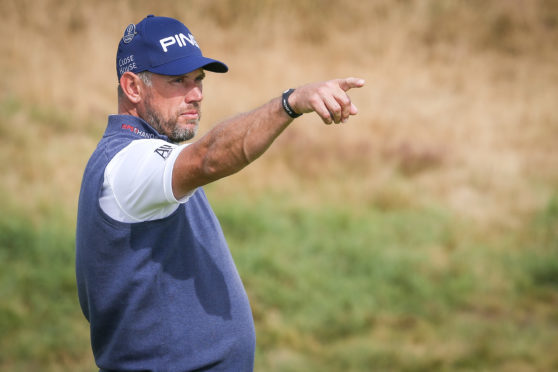The Open Championship of 2009 at Turnberry was notable for many things.
First among them, of course, was the Greatest Story Never Told. Tom Watson came within one tantalising shot of his sixth Open title at age 59.
That still gnaws at us scribes who were there. Stewart Cink is a decent guy, but his victory is forever secondary to what could have been.
Obviously, very few sports have particpants so competitive at the elite level at such an advanced age. It’s not that common in golf either, although only a year earlier to Watson’s challenge Greg Norman, then aged 53, led the Open for three rounds at Royal Birkdale.
But another, more nuanced example of golf’s unique age range came that week in the first two rounds. Watson was paired with Matteo Manassero, then the Amateur champion and aged only 16.
Two players, separated by enough years that they could have been grandfather and grandson, competing in the sport’s greatest championship. Watson finished second as we know, and Manassero finished tied for 13th. It could only really happen in golf.
Appearances can be deceptive, and you may have got the impression that golf’s is trending towards being a youngster’s game. It’s not really supported by the evidence, not least last week as the European Tour moved into full gear at the Abu Dhabi Championship.
Lee Westwood, 47 in April, won the first Rolex Series event of the year, his second such win to add to the Nedbank Challenge he took in 2018.
That win in South Africa 15 months ago was thought of as almost valedictory; Westwood had fallen out of the world’s top 50 and seemed to be winding down as many good players do, perhaps eyeing a nice stipend from seniors golf to come within a few years.
Instead, Westwood is now seriously thinking of regaining his Ryder Cup place – instead of the captaincy many think he was due for the matches in Rome in 2022 – and perhaps that elusive major title denied him in various ways and means, including 2009 when he probably should have been the man to beat Watson, is still attainable.
Certainly, Westwood is not thinking about the seniors. Why would he, when he’s still obviously competitive on the regular tours? He’s picking and choosing his fights these days, having fixed a schedule of roughly 20 to 23 events a year, but that’s maybe in his favour too; he doesn’t need to chase around in the schedule. Don’t forget he was up the leaderboard all weekend at the Open at Portrush and eventually finished fourth.
Phil Mickelson turns 50 this year, right at the week of the US Open.
He isn’t qualified for Winged Foot yet, but don’t expect him to be anywhere near the Champions Tour that week. The US Open has special exemptions in the gift of the USGA, and there’s absolutely no question that Mickelson will get one if he needs it.
Phil addressed his senior eligibility last week, but considers it only as clearly a last resort option. Instead, he feels he’s bombing it well enough to keep up with the kids, he’s healthy and fit – probably more than he’s been in his entire career – so why not keep playing the regular PGA Tour?
Well, it’s coming up to a year now since Phil’s last tour win, at the AT&T Pebble Beach. Since then, he’s had one top 20 finish and has dropped to 82nd in the world.
Still, Mickelson doesn’t feel this is a slump that is measured by his age. His long-stated ambition is to stay competitive well into his fifties. Whatever happens, he’s unlikely to be playing senior golf soon, if at all.
Tiger Woods turned 44 two days before the New Year, but seriously, you don’t expect to see him teeing it up in the seniors in six years’ time, if ever. Like Westwood, cherry-picking the schedule will work for Woods, and given the fragile state of his body, it’s probably going to be essential if he wants to play at the top level for a decent amount of time.
Woods won the Masters last year at 43. Gary Woodland was 35 when he won the US Open, Open champion Shane Lowry is 32. This is still, despite all the McIlroys, Spieths, Rahms, Thomases and other players arriving major-ready when barely in their 20s, the optimum age range to peak as a golfer – between 28 and 40.
The difference in golf is that you can consistently compete until 50, and maybe, given better health and conditioning, and helpful equipment, even beyond that in the near future.
Phil’s not fooling anyone
Making his first public appearance hosting the Desert Classic, Mickelson also addressed his decision to play the Saudi event next week.
He’d weighed up the fallout of criticism, he said, and spoke of developing the game in the Middle East. When he first went to Dubai, he noted, there were just a few skyscrapers. Now, it’s “a New York skyline”, he said.
Really, only in golf’s insular world would anyone claim sole credit for the Dubai boom.
And the idea that the UAE, while hardly a paragon of human rights, is in any way comparable to Saudi Arabia is a laughable assertion for someone of Mickelson’s self-proclaimed IQ.
